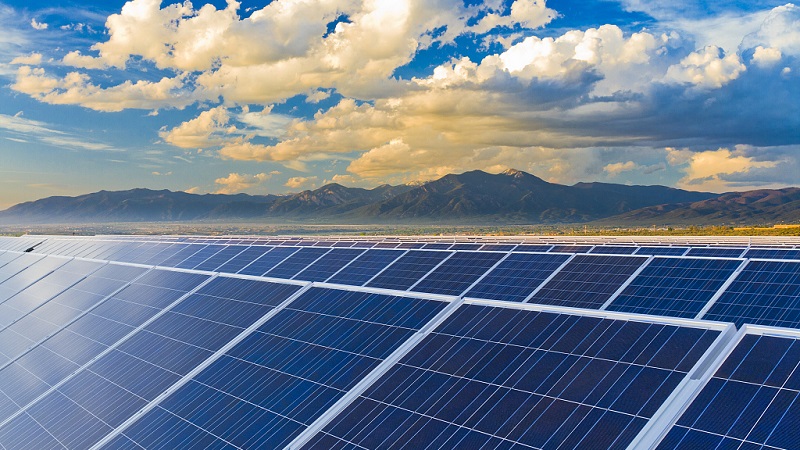Greece, with its abundant light resources, is the European country with the highest proportion of photovoltaic power generation. In recent years, Greece has been actively promoting photovoltaic technology, and photovoltaic power generation has become an important driving force for the accelerated development of new energy power systems in Greece.
An analysis of data released in February by the Hellenic Association of Photovoltaic Enterprises (Helapco) shows that Greece’s newly installed PV capacity in 2023 will reach 1.59 GW, an annual record, contributing to 74 percent of this year’s new energy. At present, Greece’s national installed capacity of 7.1 GW of photovoltaic, which can meet 18.4% of the country’s electricity demand, photovoltaic power generation has become an important driving force to accelerate the development of a new energy power system in Greece.
Greece is rich in light resources and has the highest proportion of photovoltaic power generation in Europe. Last year, the country’s photovoltaic power generation accounted for the proportion of domestic power generation (18.4 percent) ranked first in Europe, more than twice the EU average (8.6 percent), and more than three times the global average (5.4 percent). By the end of 2023, a total of 72,500 photovoltaic (PV) power generation units of all sizes and technologies will be installed throughout Greece, a figure that is growing rapidly. Photovoltaics is also the most affordable technology for generating electricity, with the cost of photovoltaic modules has fallen by 90 percent since 2009. Thanks to the promotion of PV technology, the country avoided 5.7 million tonnes of CO2 emissions in 2023, which is equivalent to the total amount of CO2 emitted by 4.6 million cars traveling an average of 10,000 kilometers a year, and which produces an environmental benefit equivalent to the growth of 90 million deciduous trees for 10 years.
The rapid development of photovoltaic technology cannot be separated from the strong support of the government. Greece has been actively promoting PV technology in recent years, and last year alone, the country invested as much as 1.11 billion euros in new PV projects, an increase of 11 percent compared to 2022, an investment that will help Greece add 15,000 jobs in 2023. in 2022, Greece launched the construction project for the largest solar power plant in the Eastern Mediterranean region, with photovoltaic installations valued at as much as 130 million euros, a 205-megawatt power plant that will generate as much as 1.5 million euros of electricity. The 205 MW plant will generate enough electricity to power 75,000 homes and will reduce CO2 emissions by more than 300,000 tonnes per year. Greece will be a leader in renewable energy,” said Prime Minister Mitsotakis at the launch of the new facility.
Greece is also actively promoting solar energy in the home, and from May 2023, the Ministry of Energy has launched a “Rooftop PV” subsidy program, for which eligible city dwellers and farmers can apply online, for a total of 238 million euros. The subsidy aims to fully cover the cost of the battery and the installation of the photovoltaic system, allowing urban residents and farmers to have the autonomy to produce and store their green energy. Applicants who join the program can place their PV installations on the roofs or roofs of buildings (including canopies, terraces, façades, awnings, and pergolas), in areas attached to buildings, on agricultural land, or on the ground.

Greek PV manufacturing companies are also actively promoting technological innovation. Brite Solar, a Greek solar module manufacturing company, is currently developing photovoltaic greenhouses and bifacial panels that can be used in agriculture. This combination of new glass-coated materials and silicon-based solar cells will further optimize photovoltaic technology for open-air agriculture, allowing for efficient power generation and storage on the one hand, protecting crops from adverse weather conditions, and reducing water evaporation on the other.
Greece’s push for PV projects has also received assistance from the EU.2024 In April, the EU approved €1 billion in state aid to Greece to support the construction of solar projects with a cumulative capacity of up to 813 MW, as well as accompanying energy storage facilities. The funds will be allocated to two projects: the Faethon project, which will see the construction of two photovoltaic plants, each with a capacity of 252 MW, along with integrated molten salt storage and an ultra-high-voltage substation, which is designed to provide peaking ancillary services; and the Seli project, which will see the construction of a 309 MW photovoltaic plant and a lithium-ion battery storage system designed to optimize power generation and safeguard grid stability.
In the revised National Energy and Climate Plan (NECP) issued in 2023, Greece proposes to increase its cumulative renewable energy capacity to 23.5 GW by 2030 and 71.7 GW by 2050, with solar energy contributing the largest share of the installed capacity, 14.1 GW by 2030 and 34.5 GW by 2050. The current rate of development of photovoltaics in Greece shows that the rate of realization of renewable energy generation is considerably higher than the expected target.
For more news and information, welcome to the latest.com!












